Just keeping my hand in with older projects…
Some images 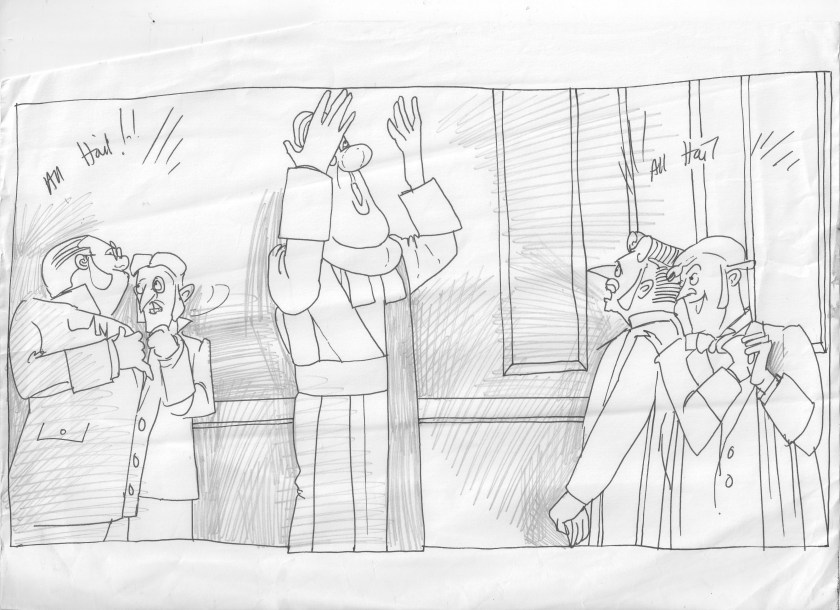
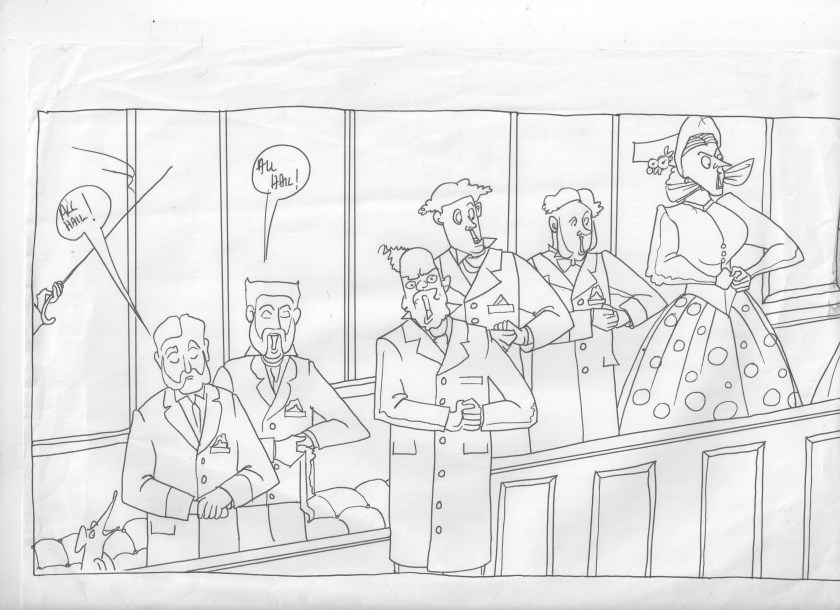
The arrival of the Judge

Edward Lear Background design- the woman of Smyrna:

Just keeping my hand in with older projects…
Some images 

The arrival of the Judge

Edward Lear Background design- the woman of Smyrna:



NOTES:
Animation started, in a way, with the invention of Faraday’s Wheel in the 19th Century: from this came the zoetrope (1834) – the spinning wheel with slots, through which one looks to see a galloping horse or a man on a trapeze. Whilst still, the wheel shows only single images, yet when in motion the pictures pasted inside the wheel flow into one moving scene. This concept was taken (to great effect) to the camera upon its invention – Muybridge was the first, setting up a line of cameras each with their individual tripwires. Upon walking across his tripwires, each camera would photograph that split-second of his walk – when these pictures are all placed in series, a walking scene has been created or a person’s walk minutely examined. This concept was played with in true artistic fashion by George Méliès, the creator of various silent films featured in Hugo in 1890 – by fiddling with the sequence, Méliès could make a character disappear and re-appear ten steps away, creating the illusion of magic and demonstrating a primitive form of animation. As such, animation is as focused on timing as it is on drawing.
However, it was McCay, from across the pond, who introduced the portrayal of emotion through animation: the task of the animator is to portray characteristics in a purely visual sense, and McCay’s Gertie the Trained Dinosaur was one of the first to achieve this characterisation showing a drawing that seemed to be thinking as well as moving. The animator, drawing in 2D, must think in 3D – it is here Wilson introduces the concept of the hyper-cube. When we think of 2D, we think of the square; 3D the cube, and 4D is the melding of two cubes into one amalgamation and another dimension. In a way, the animator must switch between different dimensions, and the example given was one of punching: though the animator draws the effect in 2D, the punch is thought of in circles or arcs due to the punch’s path of motion.
It is with these foundations laid down that we come to Walt Disney who introduced believability and genuine emotion into animation with feature films. Budget was a big deal for Disney, as shown by their first production of Alice, which was a mix of live-action (cheaper) and animation (more expensive). In today’s film, there are 24 frames per second, and to reduce the cost and time of animation Disney decided to reduce the drawings to 12 per second. The iconic character of Mickey Mouse was introduced first in Plane Crazy, a silent movie. It is here Wilson claims that the design of Mickey was taken from Ub Iwerks not Disney. Continuing on to the famous Steamboat Willie, Disney tied a musical soundtrack directly the animation – the same formula for Fantasia. With the intersection of music and motion one can look at tap dancing. Fred Astaire was notorious for dancing off-beat, only to occasionally switch onto the beat to great effect. Disney tended to do the visual image on the beat (less exciting, and called “mickey mousing”), using music as both characterisation and aesthetic. There is also the fact that every action in Disney has a corresponding sound: the pulling of Clarabelle the Cow’s tail resulted in a musical ‘moo’. Today, lip-syncing in Disney is often relaxed, as the animators keep the lines of the lips and face vague – both the economise and allow easier dubbing into other languages.
There is, of course, the question of Mickey’s gloves – they held a practical reason (during black and white films, if an object was black Mickey’s hand would disappear upon holding it) but they also link to Mickey’s function as a public figure. It is with this that one could claim Mickey a problematic figure – his gloves and mannerisms mimic the characteristics of the minstrels, last seen in the 70s BBC; minstrels would wear white gloves and often tap dance and sing for entertainment. It was a staple of American Vaudeville entertainment. This characteristic is the only one that Disney cannot sanitise today, as the white gloves are iconic to the character. In other areas, however, there is (and always has been) ongoing sanitisation – potentially offensive sections of Fantasia, for instance, have been quietly redrawn to remove the offending sections, though not the crows in Dumbo. Films like Song of the south have all but disappeared from the Disney canon. As a business, family entertainment is the goal of Disney- and this explains both the sanitisation and the fact that the character of Mickey has changed from the troublemaker in Steamboat Willie to the wholesome soul in modern day films. This was the goal as it (along with another factor) would guarantee Disney success and money. The first way was shown by Snow White: it was the first film to release a soundtrack and related merchandise. The second method is one of morality: most animation that Disney creates holds a didactic function – the films tell stories that reward good behaviour and punish the bad, though Disney claimed he was not in the business of “preaching a message”. There are 5 Disney virtues: the first is kindness (such as Cinderella’s kindness to the animals), the second is perseverance (the prince in Cinderella, for example). The third is faith, with its obvious connotations of religion – the only overtly religious piece of Disney, (overlooking Christian imagery at the end of Fantasia) is Hunchback of Notre Dame but this pushes kindness combined with faith, and if Disney is interested in Belief, it is belief itself- and not a belief in a specific person or thing. Belief in self is allied to belief in a higher power. The final one is family: Aristocats and 101 Dalmatians, for instance, display the ethos that the meaning of family can still be extended, and is not just about blood relatives. There is, moreover, a heavy Protestant work ethic that is present in Disney films, and the most recent Frozen emphasises the dimension of not trusting appearances, first glimpsed in Gaston in Beauty and the Beast but maybe hinted at in the magical witches of both Mary Poppins and Bedknobs and Broomsticks who promote family values and patch together relationships that have gone wrong.

The gospel according to walt.
So just to kick off, is there a reference to adam and eve in the fact that snow white eats a poisoned apple?
Is there a reference to Christ in the initials of Jiminy Cricket?
Jonah and the whale. (Pinocchio)
The Disney gospel is part of most chidren’s earliest teachings.
Young impressionable minds
The amount of time children spend in church or synagogues of temples is dwarfed by the amount of time children spend in front of Disney films.
“One of the most significant shaping forces in the 20th Century.”
“A sacred destination of the first trip to the movies.”
Calvinist paradigm of hard work- rewarded with upward solical mobility/ walt’s rise to prosperity
Disney boycotted by the Washington DC Traditional values Coalition in 1990s (“they’re not fair to the Christian message of life death and eternal life” Revd Clark Whitten of the Calvary Assembly church in Orlando. “they have a gospel- it’s to make money”)
Humanism: when Disneyland opened in Anaheim in 1954 Time magazine called Disney “the poet of the new American Humanism” and says the common symbol of humanity in the struggle against the forces of evil is Mickey Mouse”
It’s not what you believe that is important, but the fact of believing itself is important.
Disney is the perfect example of the protestant work ethic divorced from religious moorings.
Disney choice of magic over religion
VALUES: Good triumphs over evil a consistent set of moral values throughout the movies. Disney personal values and commercial goals
Optimism as a creed (pinoccho)
Miracles (Pinocchio as Jesus: the puppet comes to life and resurrected as boy,)
WALT: didn’t want to single out any single religion . But always designed as a “message” He tells reporter: “we like to have a point of view in our stories not an obvious moral but a worthwhile theme” in 1962: Children are people and they should have to reach to learn about things, to understand things just as adults have to reach if they are to grow in mental statue. Life is composed of lights and shadows and we have to be untruthful, insincere aand saccharine if we are to pretenbd there were no shadows. Most things are good and they are the strongest things; but there are evil things too and you are not doing a child a favour by trying to shield him from reality. The important thing is to teach a child that good can always triumph over evil and that is what our pictures attempt to do.”
Sam Goldwyn: Pictures are for entertainment- messages should be sent by western union.
FAITH: Faith in something greater than self? Combined with faith in self
Wish fulfillment
Magic allows you to see a better life and apply the vision to real life.
An agent of transformation. The ordinary becomes extraordinary
The little mermaid: challenge of intermarriage
The lion king:the hindu circle of life
MECCA: Disneyland: a place of pilgrimage (parents reconnecting with their childhood) a cartoon fantasy mecca?
RACISM: Racist representation esp in DUMBO and fantasia (censored in Fantasia but not in Dumbo) song of the south and the three caballeros
DEUS EX MACHINA: No obvious judeo-christian iconography but Greek magic: universal device from ancient greece
Censorship: note the general anxiety about racism: song of the south, dumbo fantasia- cleaning up of Aladdin’s anti-muslim jokes and the toning down of homophobia (see the beginning of Der Fuhrer’s face) to the extent that the remake of Beauty and the beast contains a genuine gay subplot.
SNOW WHITE:
The akedah: snow white dispatched to be killed in the forest. Sacrifice of Isaac by Abraham
The huntsman returns with the heart of a boar. (Abraham sacrifices a ram)
Whistle while you work: the work ethic during the great depression
The dwarfs are also hard workees, singing while the work.\snow white- just like an angel. See Rhapsody in Blue in Fantasia 2000
Cleanliness- next to godliness?
There was a sequence where Snow white teaches the dwarves how to pray- abandoned. But snow white prays- she asks for blessings on the seven little men who have been so kind to me and please make grumpy like me” next day when grumpy gets a kiss, she says” why grumpy you DO care”
Escapist and androcentric.
PINOCCHIO- fate not god steps in when things get bad: the blue fairy
As reward to Gepetto for bringing happiness to others
But the outcome will be entirely up to you. (Good works)
Jiminy cricket became an alternative exclamation to Jesus Christ in the US.
He is the still small voice.
The blue fairy as the Virgin mary?
Her appearance in the film is like the appearance of Mary at Fatima and La Salette BLUE and WHITE!
It’ll take a mira le to get out of here (says Jiminy in Stromboli’s caravan, then the blue fairy arrives. (A lie keeps growing until it’s as plain as the nose on your face”
Jiminy Cricket defines temptation as The wrong things that seem right at the time.
They like him he’s a success. Gosh. Maybe I was wrong. I guess he won’t need me anymore. What does an actor need with a conscience?”
“Give a bad boy enough rope and hell soon make a jackass of himself.”
The essence of the Disney religion is not theology but morality: prove yourself brave truthful and unselfish and someday you will be a real boy. Resurrection. Awake Pinocchio awake!
NB: difference between snow white and Pinocchio is that Pinocchio is active in his salvation and snow white is entirely passive.
FANTASIA: Dancing toadstools- racist presentation of chinese figures probably intended to be amiable not malevolent. It is still a brilliant piece of animation
The sorcerer’s apprentice: work-shy mickey gets his comeuppance. (work ethic)
The image has been taken by Disney and turned mickey into a high priest of magic in the Disney kingdom. (Disney’s mecca)
Ave maria; the most explicit reference to religion until hunchback of notre dame
The text is an odd interperattion of the latin: the prince of peace your arms embrace while hosts ofdarkness fade and cover, Oh save us mother full of grace in life, and in our dying hour ave maria.
DUMBO: Mother love
Note the workers putting up te circus sing while they work: they “slave until we’re almost dead”
In the parade, dumbo slips and a boy laughs at him. The boy ALSO has improbably big ears.
BAMBI: man in the forest song at the beginning: “love is a song that never ends”
Carefree childhood and dependence on mother is finished with the greatest tear-jerker in the history of cinema:
Your mother cannot be with you anymore. Earlier they had been told of “Man in the forest”now it seems there is a man shooting out of season. Two shots and the second one is fatal.
It is man.. he is here again. There man be many this time. We must go deep into the forest. Hurry. Follow me”
An unspoilt eden is destroyed by man.
Cinderella: if you keep on believing, the dream you wish for will come true.
Cinderella has friends- birds mice etc.. her kindness in helping small rodents explains why the animals are so keen to help her wit housework
Elsa in FROZEN, BEDKNOBS and POPPINS- all autonomous witches, (perhaps it’s a witch. Don’t be sily witches have brooms) and spinsters. establishing world order rather than destroying it. Actually both Poppins and Eglantine are outsiders reestablish family values. And the sisters in Frozen are estranged …
A magical nanny and a reluctant nanny
(above: Milt Kahl images from Mary Poppins)
Religious iconography in Mary poppins;
1) mary poppins is Mary the mother of jesus, practically perfect. The immaculate conception. Above all other women etc.

2) 2) a spoonful of sugar: the Franciscan nod: Mary talks to the birds (feed the birds song with encircling chorus of doves)
3) 3) George banks gives tuppence to the bank chairman- render unto Caesar what is Caesar’s- capitalist banker to family man/ charity… the widow’s mite
4) Alternative view: a scurrilous interpretation
nanny shows up and changes a married man’s life but has to leave because she is pregnant. And no, she doesn’t change “the family” since the wife and kids are still the mindless dimwits at the end of the movie that they were in the beginning. And how do we know that Mary is pregnant? Because of the way she hold hers hands folded over her stomach [at the top of the staircase] when Mr. Banks finally emerges from the basement with the mended kite. So, while most of us think that Mary is misty eyed over Jane & Michael as she stands on the doorstep, the truth is: she is affected by having to say goodbye to Mr. Banks.

Other religious imagery in Disney:
Fantasia ending (ave maria triumphs over Chernabog. But it is nature that is triumphant as also in the end of Fantasia 2000)
Bambi and the Lion King– the role of the father figure, in the Lion king is actually a voice from the dead.
Hunchback
Self sacrifice as a form of redemption: – Baloo, the great dane in lady and the tramp, King Triton in The little mermaid, the beast in Beauty and the beast, and Pinocchio


Here are a few screenshots of a sketch of the Bridesmaids’ chorus from TRIAL BY JURY.


Here is a first colour version:
This is the preferred version:
see: https://animate-tim.com/2017/05/16/a-few-thoughts-about-trial-by-jury/
Here is a small comic strip intended for a lesson…

the storyboards continue. Here are some pictures from the Judge’s song: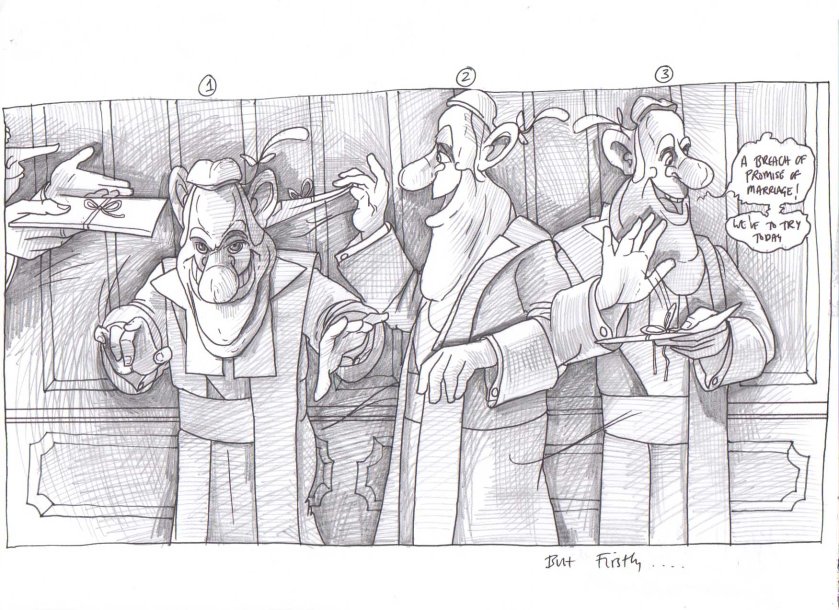
if the time you’ll not begrudge

For these kind words accept my thanks I pray, a breach of promise we’ve to try today

called to the bar
Here are storyboards for William Hargreaves’ song “the night I appeared as Macbeth”
The pictures are not absolutely in the intended order


The band played the barber of seville quite a lot before I came on



cos we cut quite a few pages whenever rehearsal went wrong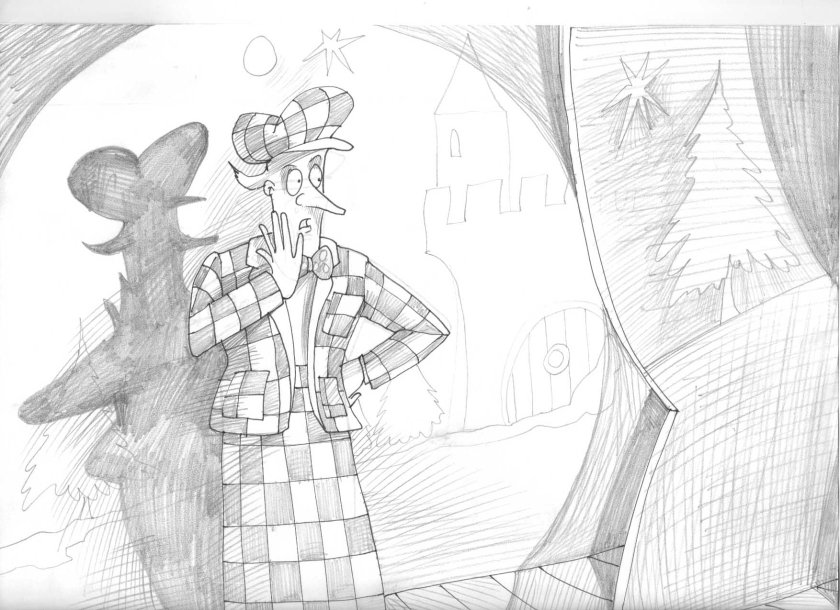
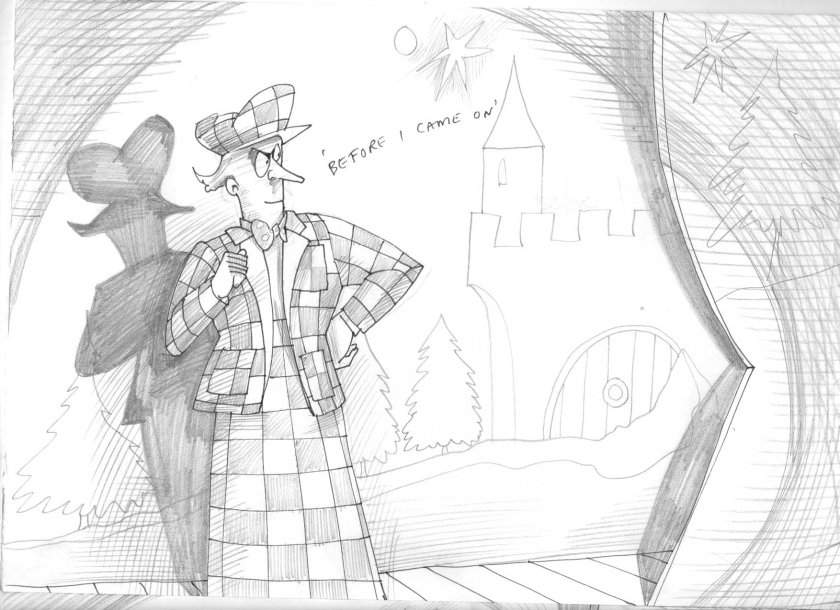


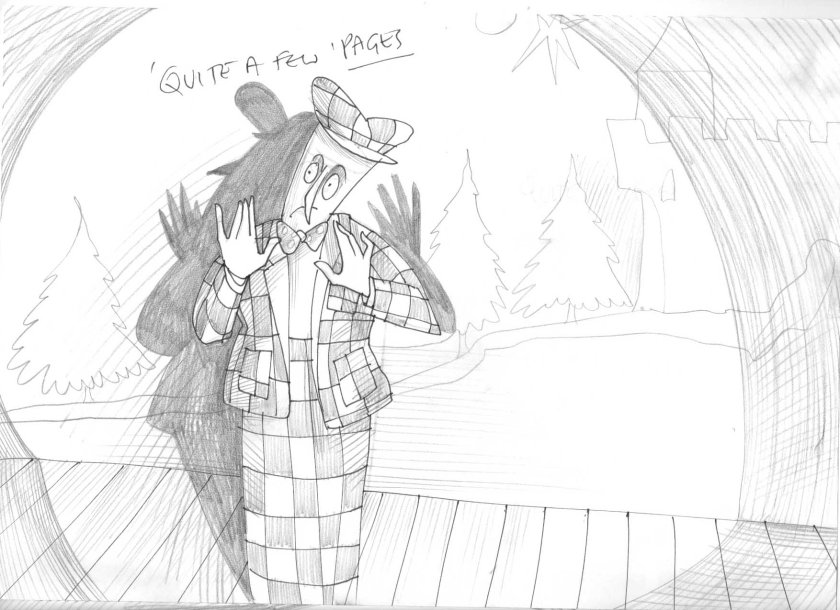



oh the flowers, what a feast. they threw it in bagfulls self raising and yeast






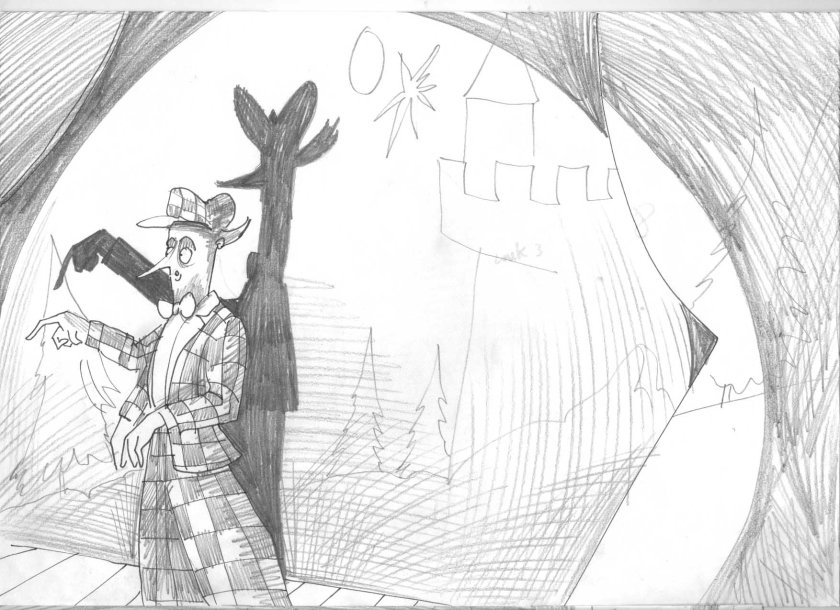




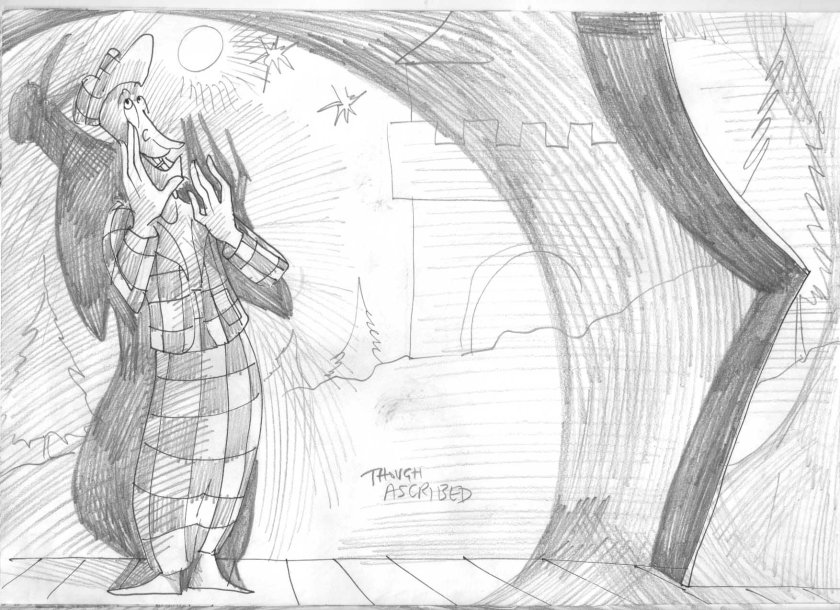



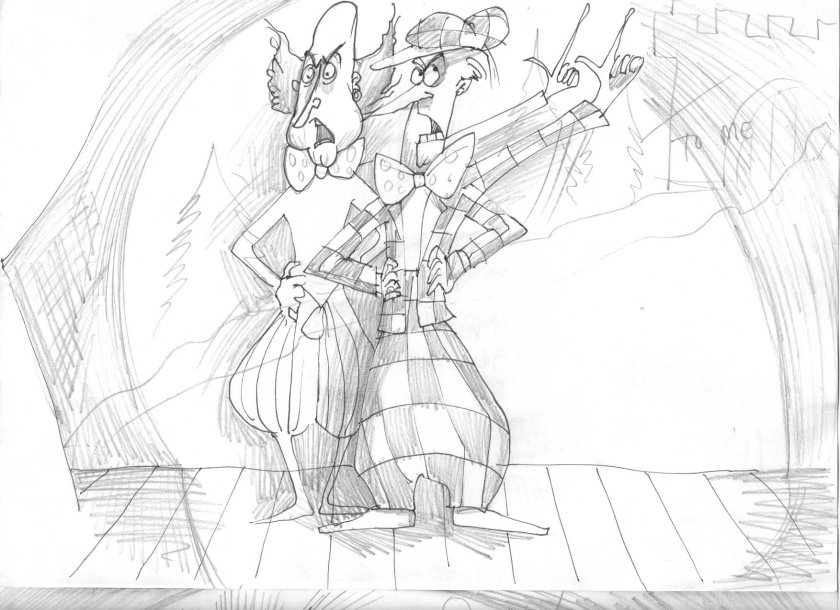



Dance: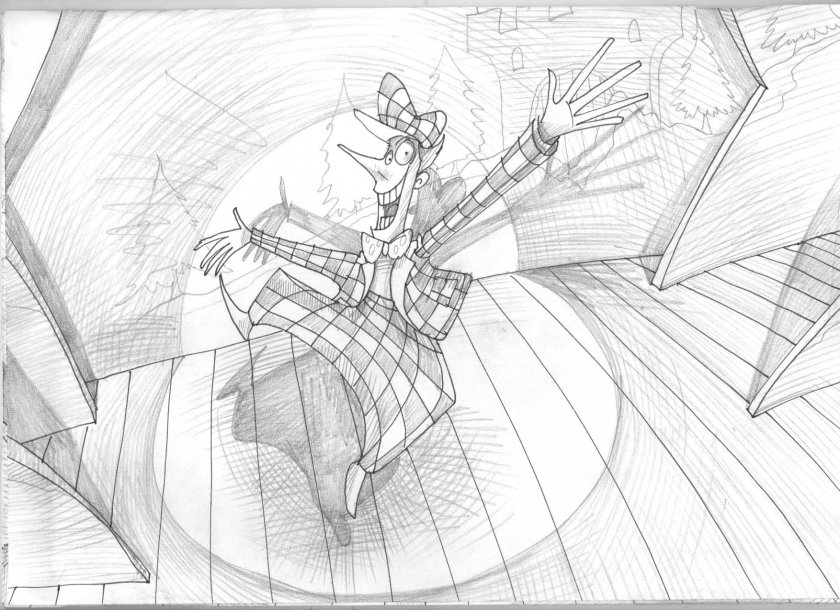






so I put in some lines from some popular rhymes, and some well-chosen words of my own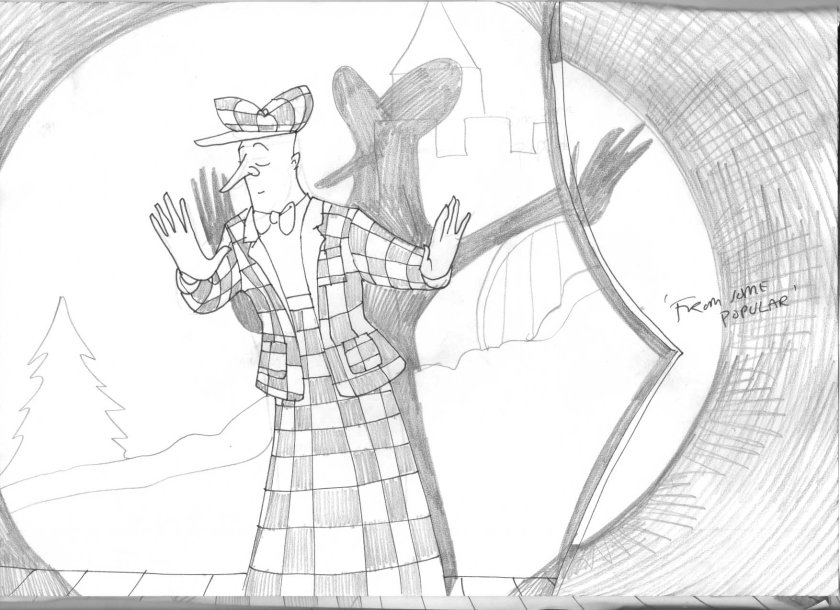

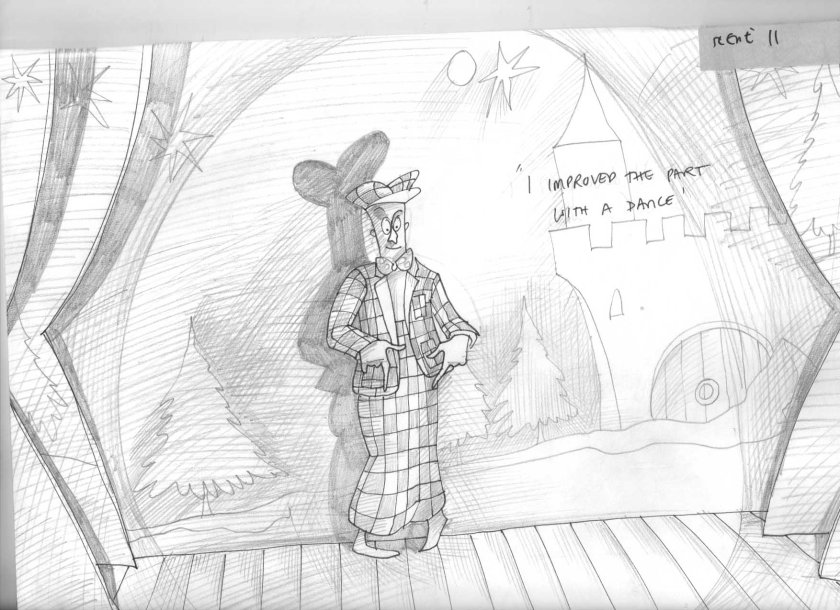
I improved the part with a dance




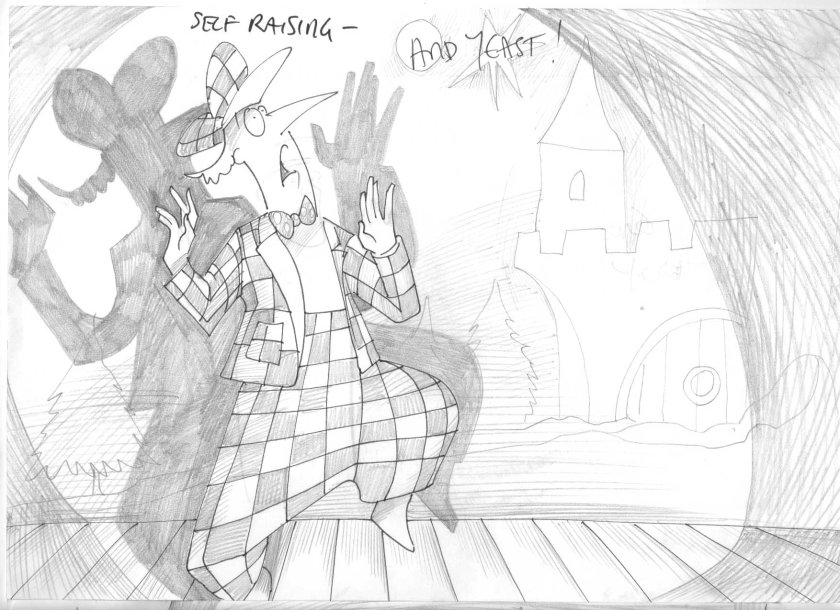
They threw it self-raising and yeast!
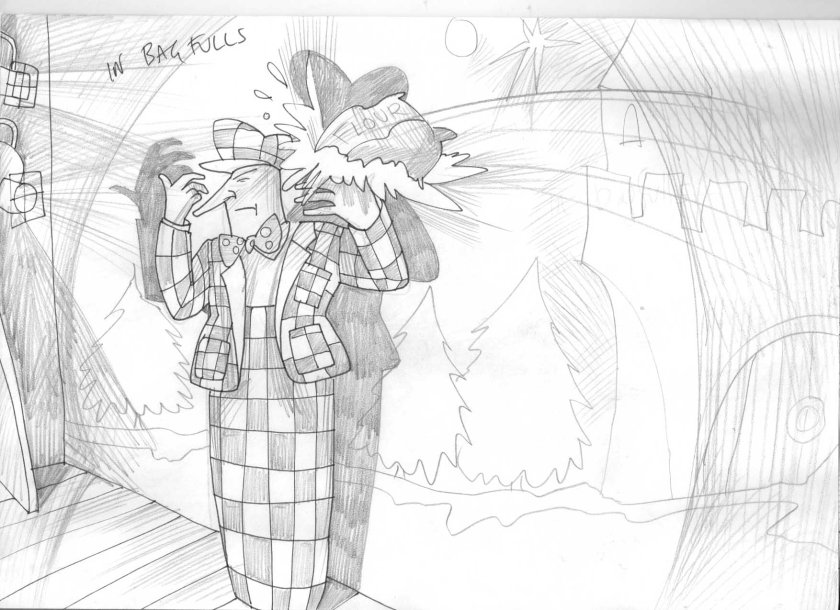

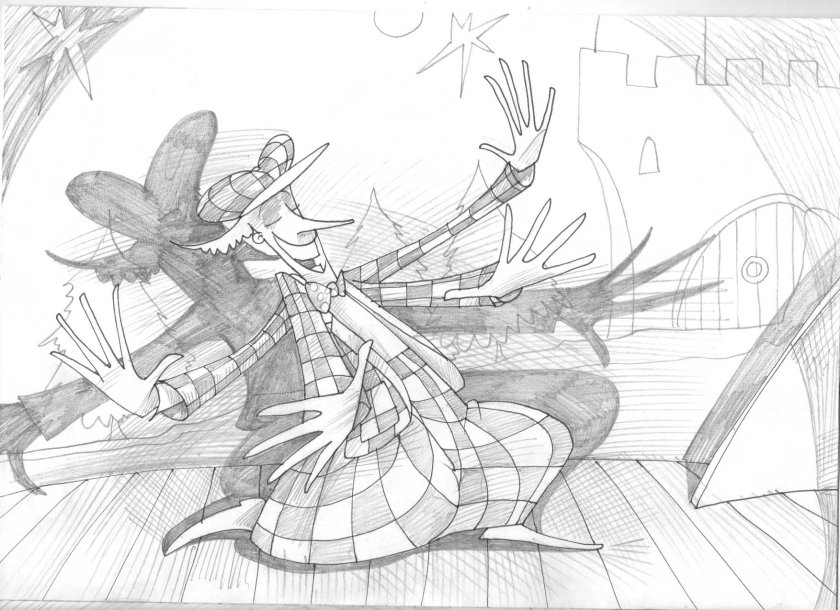



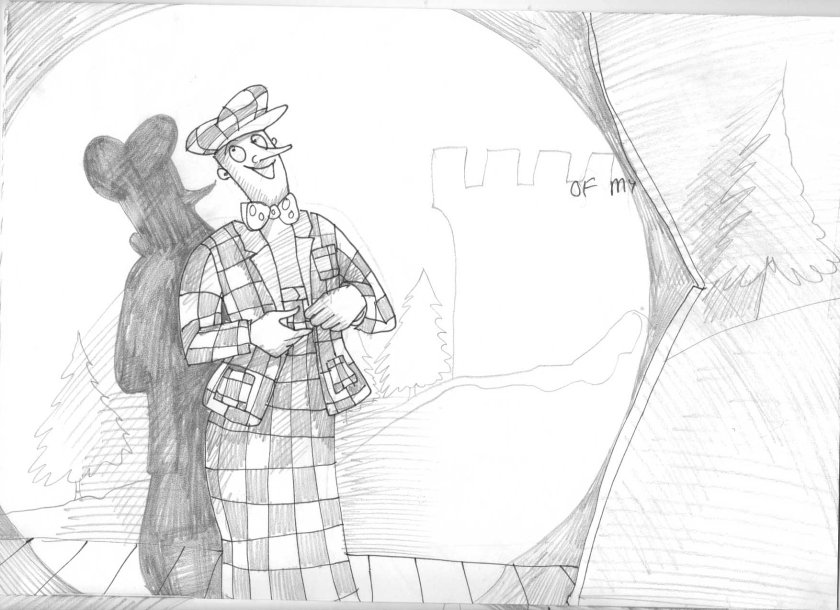




Here is a version of the song performed by Tim:
Here are some more storyboard illustrations from TRIAL BY JURY


I’ll tell you how


Above: for today in this arena
Below: the judge’s entrance: behold your judge
to your bright rays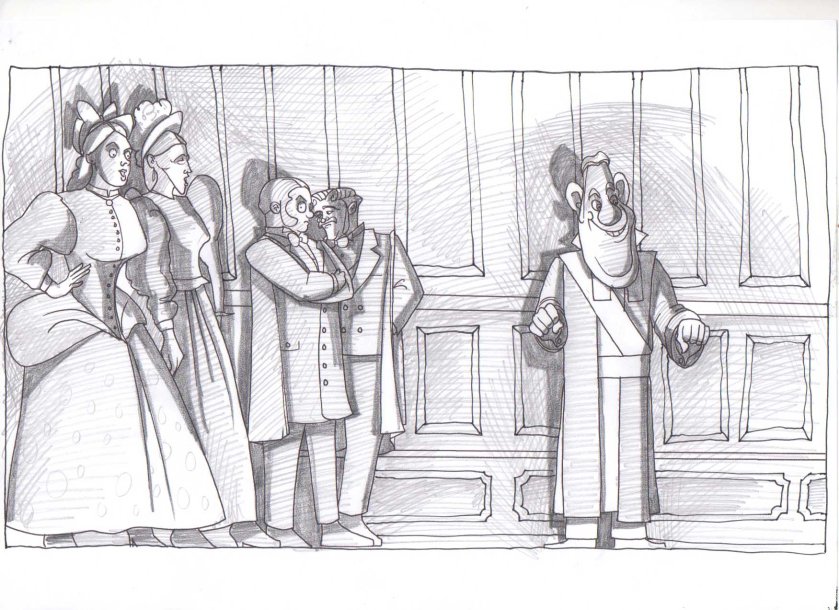
we never grudge ecstatic praise
may each decree and statute rank
and never be reversed en blanc

Hark the hour
breathing hope and fear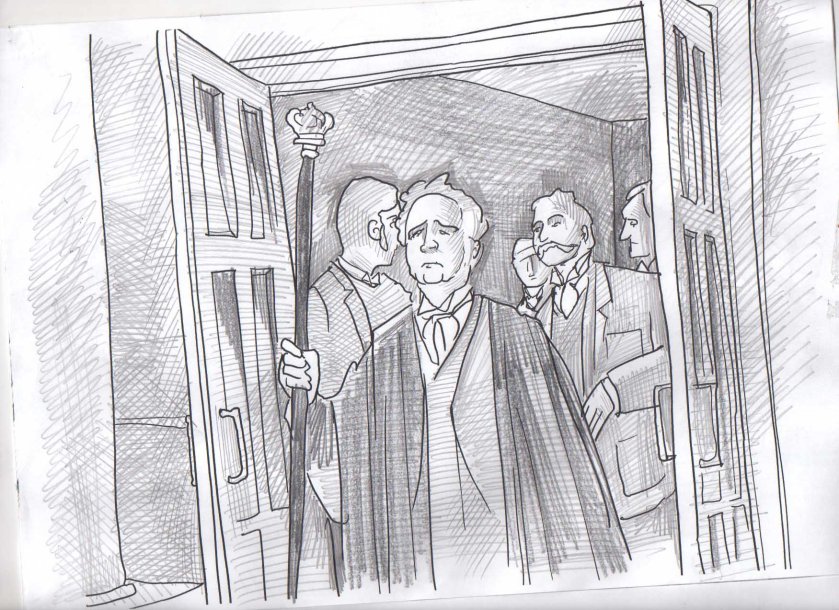
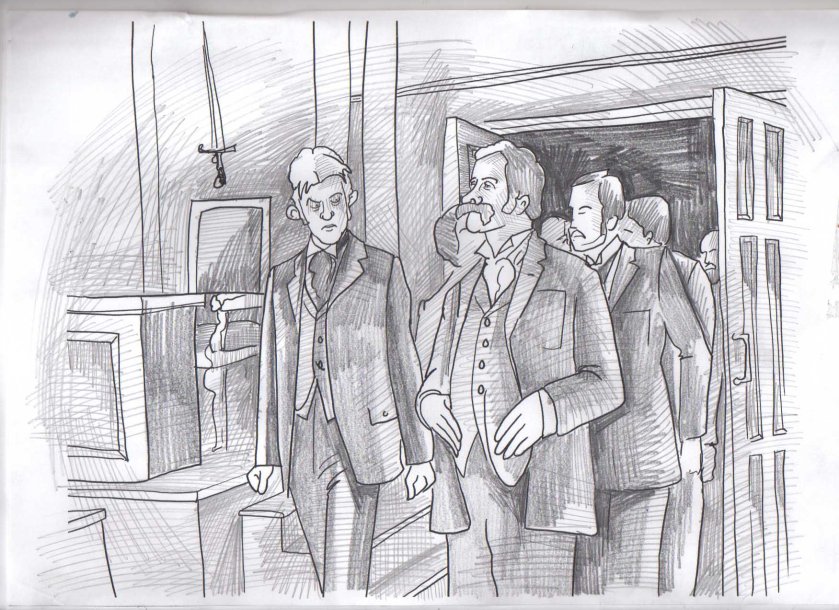


in this arena
for today


for these kind words accept my thanks i pray
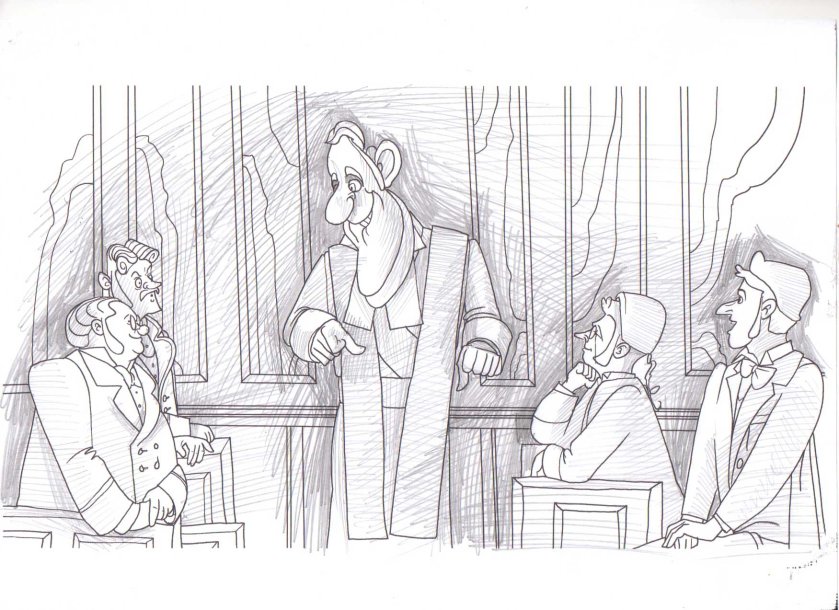
For these kind words etc

A breach of promise we’ve to try today
 All hail great judge etc
All hail great judge etc

but firstly if the time you’ll not begrudge, I’ll tell you how I came to be a judge
Here are some more (the order is not correct)

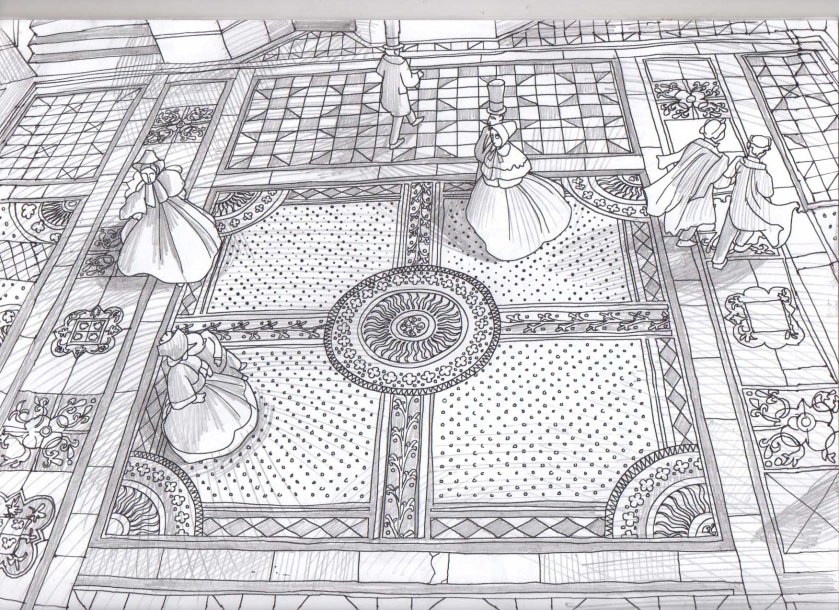




hark the hour of 10 is sounding

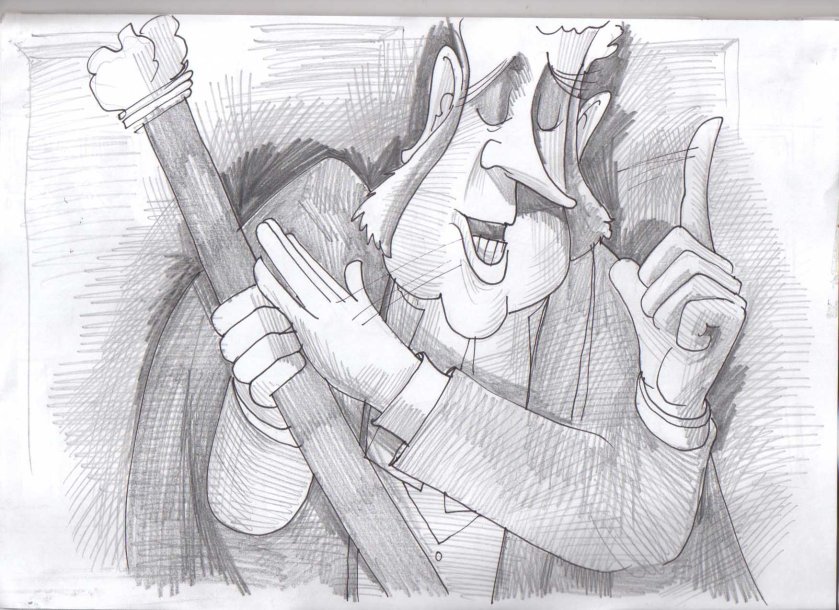


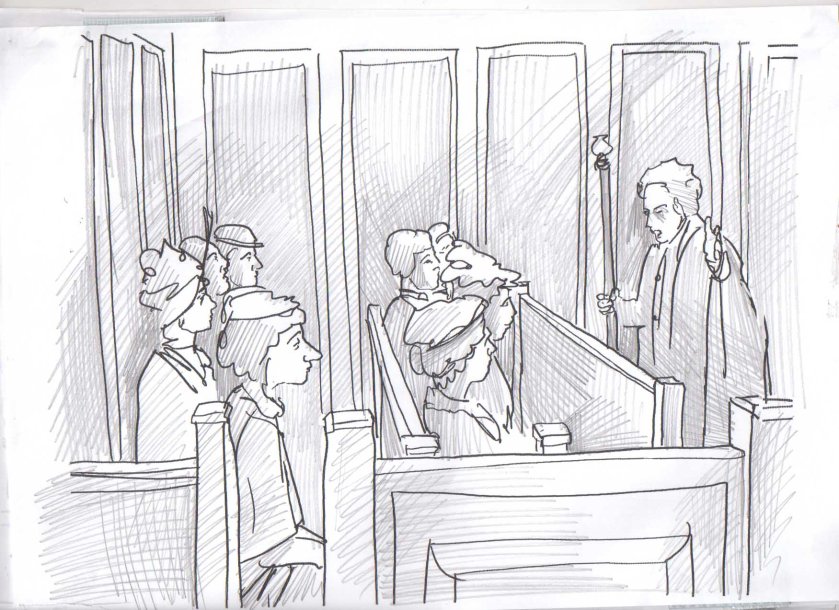

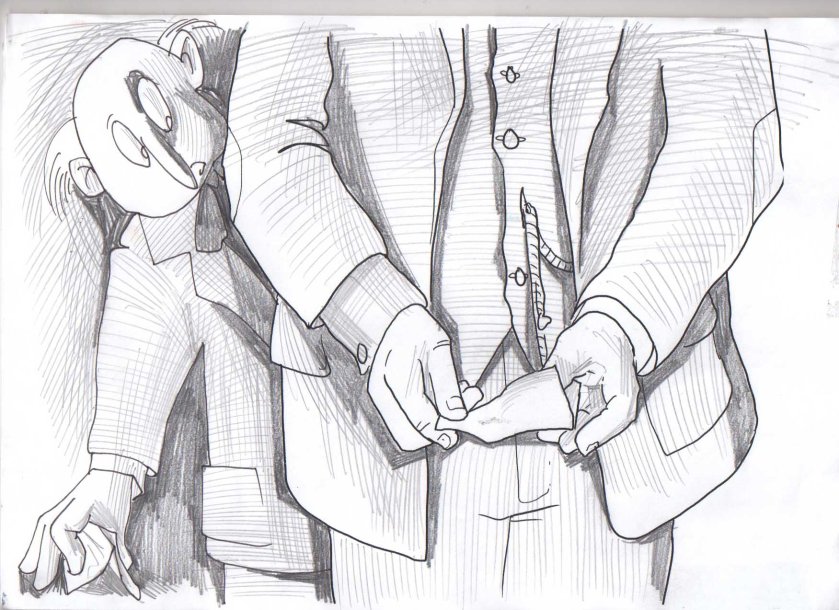

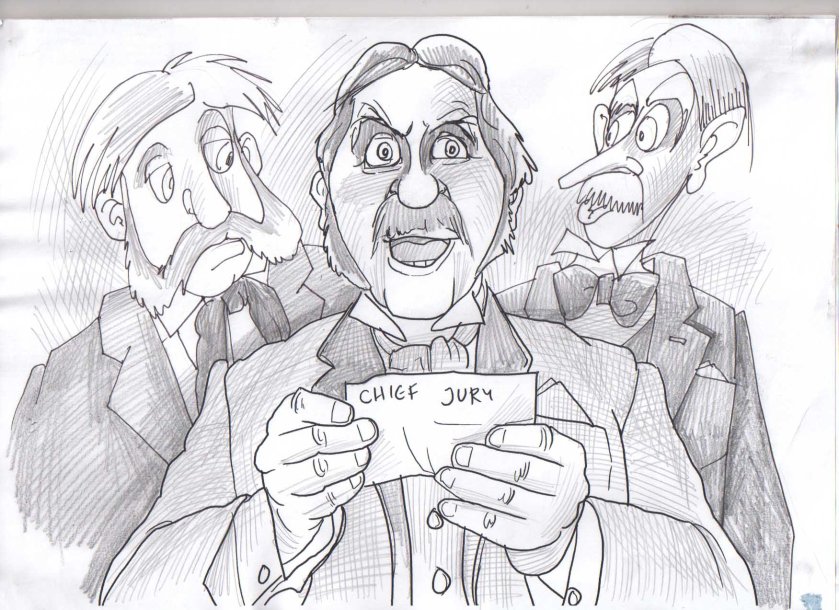


hearts with anxious fears abounding




Upon the other side…
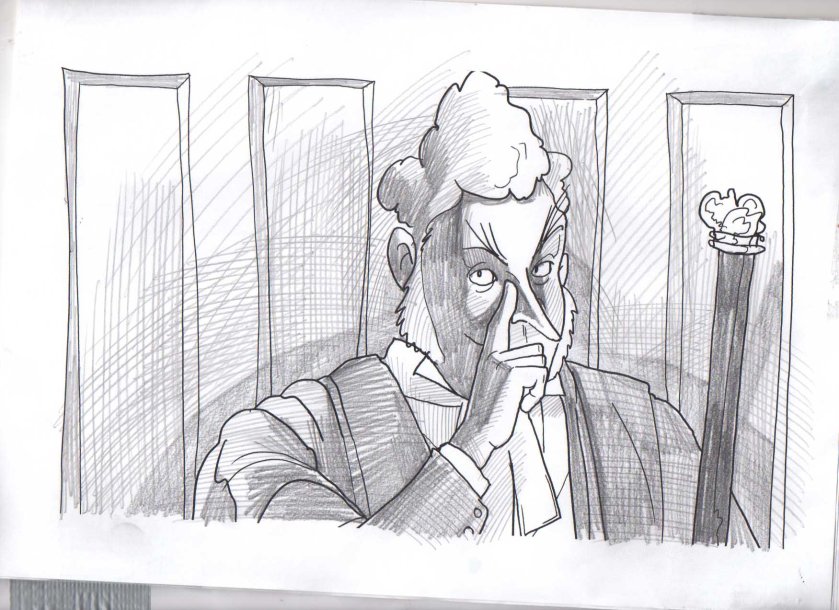
What he may say you needn’t mind
from bias free of every kind

oh listen to the Plaintiff’s case
the broken hearted bride
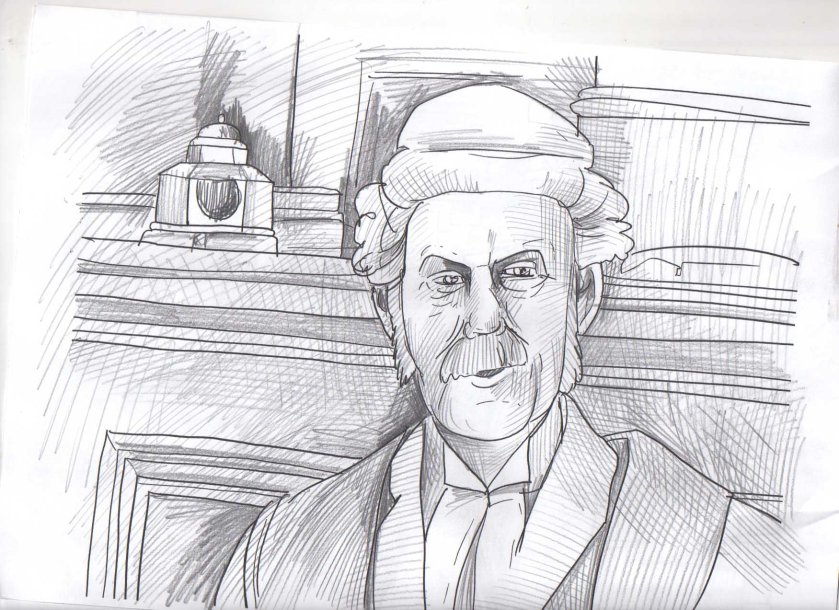
Here is a post on progress on the Judge’s song from “Trial by Jury”.
This is a line test of the first verse. The Right arm and some of the body is still missing as well as the earlier frames of the pigtail and the pupils.
The animation was completed on the Harmony/toon boom system though I note the production of the brilliant and recently-screened “Ethel and Ernest” on BBC was done with TV Paint which seems to offer so much more opportunity in terms of textures and usability. Harmony was a wonderful tool when it was run by the Vogelesang family, particularly Lilly and Joan, but they were taken over by Corus entertainment in 2014 or so and it does not seem to have been the same ever since. I have been teaching in a school in Moscow that apparently promotes the software and it was a devil of a job to get it actually to work at all on the school machines. So much for Industry standard! I note the company also acquired Animo, Pegs’n’co and the Cambridge animation system, rival 2d animating software and has not made any effort to update any of these since, effectively smashing the opposition and leaving precious little choice.
Here is an earlier version:

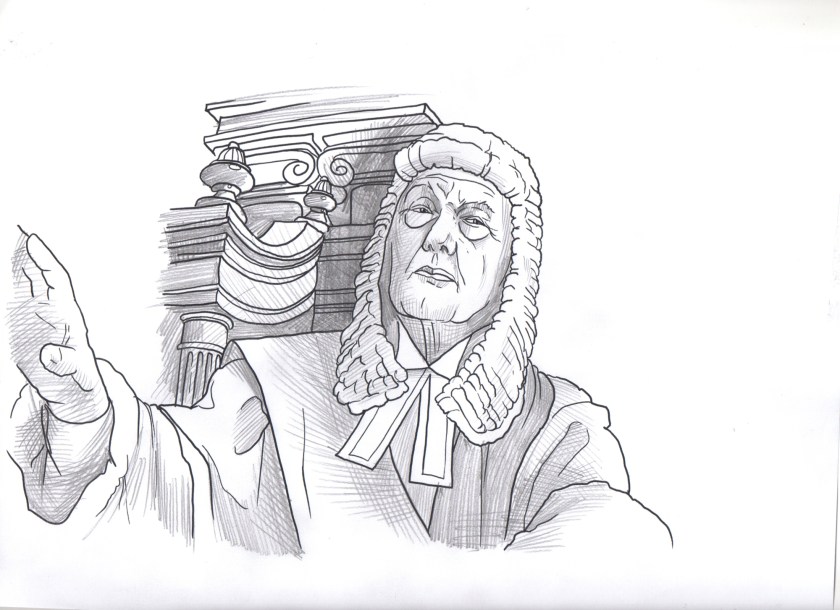
This is the finished “look”-

First combined image of background and character…

For the last year I have been grabbing time between lectures to make some progress on part 2 of the documentary talk about music hall. I have also been finishing some storyboarding for a couple of proposed films and some preparation for a BBC project, so it has been a full year! (That is by way of a preamble and an excuse for tardiness!)
Here is the full documentation on a piece I have just finished animating which is based on a song by Harry Champion:
First sketches:


with jacket sleeves:
With coloured and shaded hat:
body sketched in:

the tomato plant:
and adding the jacket design incrementally

The finished product:
The Context:
The first part of the Music Hall documentary:
The Coburn scene developing:
Marie Lloyd scene:
The original song:
My animation:
The beginning of the film (Music Hall part 2)